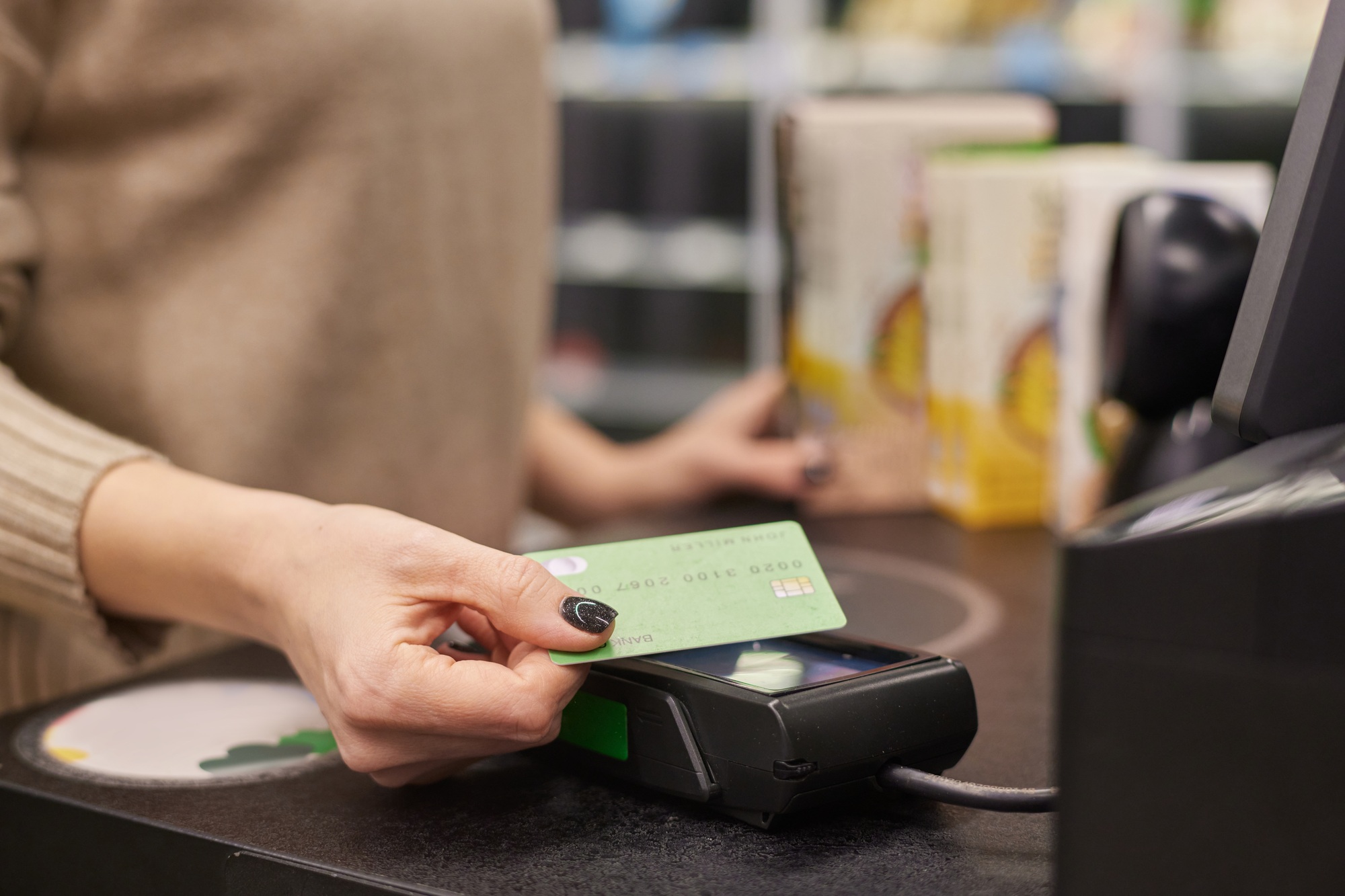Key Takeaways

- Create a Comprehensive Business Plan: A well-structured business plan is essential for outlining goals, strategies, and financial projections in starting a grocery store.
- Perform Market Analysis: Understanding your target audience and competitor landscape is crucial for developing effective marketing strategies and differentiating your store.
- Define Your Business Model: Clearly identify your revenue streams and cost structure to optimize profitability and ensure financial sustainability.
- Implement Effective Marketing Strategies: Utilize both online and local advertising efforts, along with community engagement, to attract and retain customers.
- Ensure Smooth Operations: A detailed operations plan addressing supply chain management, store layout, and inventory control is vital for daily functions and customer satisfaction.
- Prepare Financial Projections: Accurate financial forecasts based on sales estimates and market factors help you assess profitability and guide your grocery store towards long-term success.
Starting a grocery store can be an exciting venture, but without a solid business plan, success can be elusive. You need a roadmap that outlines your goals, strategies, and financial projections. A well-crafted grocery store business plan not only helps you secure funding but also guides your daily operations and decision-making.
In today’s competitive market, understanding your target audience and differentiating your store from others is crucial. Whether you’re focusing on organic products, local goods, or budget-friendly options, your business plan should reflect your unique vision. By taking the time to develop a comprehensive plan, you’ll set the foundation for a thriving grocery store that meets the needs of your community.
Overview of Grocery Store Business Plan

A grocery store business plan outlines your approach to starting a business in the retail food industry. This structured document clarifies your business goals and strategies, forming the foundation for your grocery store’s operations.
A well-crafted business plan includes key components, such as:
- Executive Summary: Summarizes your business idea, mission, and vision, providing an overview of the grocery store concept.
- Market Analysis: Examines the target market, identifies customer demographics, and analyzes competitors to understand market trends.
- Marketing Strategy: Details how you will attract and retain customers, including promotions, pricing strategies, and unique selling propositions.
- Operations Plan: Describes the day-to-day operations of your grocery store, encompassing inventory management, supplier relationships, and staffing needs.
- Financial Projections: Provides a forecast of anticipated revenue, expenses, and profitability, crucial for securing funding and ensuring sustainability.
Understanding your target audience is critical. Whether you focus on organic products, local goods, or budget-friendly options, a solid business plan differentiates your grocery store from competitors. By addressing community needs effectively, you enhance your chances of establishing a successful grocery venture.
Market Analysis

A thorough market analysis forms the backbone of your grocery store business plan. It helps you understand the landscape, pinpoint your target audience, and analyze your competitors.
Target Audience
Identify your target audience to tailor your offerings and marketing strategies. Factors like age, income level, and shopping habits dictate consumer behavior. For example, young families often seek convenience and healthy options, while seniors might prioritize affordability and accessibility. Research local demographics and preferences to establish a customer profile, ensuring your product selection meets their needs.
Competitor Analysis
Conduct a detailed competitor analysis to understand market positioning and gaps. Evaluate local grocery stores, supermarkets, and niche markets for pricing strategies, product offerings, and customer service. Consider factors like store layout, promotions, and online presence. By assessing these elements, you can create effective strategies that highlight your unique selling points and attract customers seeking alternatives to existing options. This insight allows you to differentiate your grocery store and increase your chances of success in the competitive market.
Business Model

A well-defined business model is crucial for your grocery store. It outlines how you create, deliver, and capture value, which is essential for establishing a successful small business. Focus on differentiating your store from competitors through unique offerings and strategies.
Revenue Streams
Identify multiple revenue streams to enhance profitability. Consider the following options:
- In-store sales: Retail pricing on various food products generates direct revenue.
- Online sales: Implement e-commerce for home delivery or pickup options, attracting tech-savvy customers.
- Subscription services: Offer meal kits or seasonal produce boxes for recurring income.
- Workshops and events: Host cooking classes or nutritional seminars to engage the community and create additional revenue sources.
- Partnerships: Collaborate with local farmers or businesses to feature their products, boosting sales while supporting the community.
Understanding these revenue streams helps shape your marketing strategy and ensures financial stability for your small business.
Cost Structure
Analyze your cost structure for effective financial management. Key components include:
- Fixed costs: Rent, utilities, insurance, and salaries are necessary for daily operations, regardless of revenue.
- Variable costs: Inventory costs fluctuate based on sales volume and seasonal demand, requiring careful monitoring.
- Marketing expenses: Budget for advertising, promotions, and community events to attract customers and build brand loyalty.
- Operational costs: Include expenses related to equipment, maintenance, and supplies to ensure seamless operations.
By analyzing your cost structure, you can identify areas for optimization and ensure your grocery store remains prosperous.
Marketing Strategies

An effective marketing strategy is essential for attracting and retaining customers in your grocery store. Both online and local advertising tactics can enhance your visibility and boost sales.
Online Marketing
- User-Friendly App and Online Orders: Develop a user-friendly app that facilitates online orders and offers digital coupons, making shopping more convenient for customers. This feature enhances accessibility, encourages repeat business, and caters to tech-savvy consumers.
- Targeted Advertising: Utilize search engine marketing and display ads to reach your specific audience. Focusing on demographics and interests ensures your promotions attract shoppers likely to visit your store or engage with your products.
Local Advertising
- In-Store Marketing: Create an inviting shopping environment with clear signage and a logical layout. Ensure your store encourages exploration, making it easy for customers to find what they need.
- Promotions and Discounts: Implement in-store promotions like buy one, get one (BOGO) deals, mix and match discounts, or free samples to entice purchases. These strategies increase foot traffic and create a sense of urgency among shoppers.
- Community Engagement: Participate in local events or sponsor community activities. Being visible in your neighborhood fosters goodwill and builds brand loyalty among customers who prefer to support small businesses.
Operations Plan

An effective operations plan outlines the daily functions of your grocery store. It ensures smooth operations and sets the foundation for a successful small business.
Supply Chain Management
Supply chain management focuses on ensuring timely deliveries and availability of products. You’ll oversee communications with farmers and distributors. By establishing strong relationships, you can negotiate favorable terms and ensure product quality. Regular inventory assessments will help maintain stock levels, reducing shortages and overstocks, which directly affects customer satisfaction.
Store Layout and Design
Store layout and design influence customer experience and sales. A well-organized store encourages customer flow and enhances product visibility. Plan aisle widths to facilitate easy navigation. Position high-demand products at the back to draw customers through the store. Incorporate signage that clearly labels sections and promotions to guide shoppers efficiently. Thoughtful design elements, such as lighting and color schemes, make the store inviting and can enhance the shopping atmosphere.
Financial Projections

Financial projections play a vital role in your grocery store business plan, aiding in assessing future profitability and cash flow. Focus on creating a robust sales forecast, which serves as the foundation for your financial strategy.
Sales Forecast
The sales forecast represents topline projections for your business’s anticipated performance. Estimate two critical drivers:
- Average Price: Determine the average price of the items you plan to sell.
- Number of Monthly Transactions: Assess the expected number of sales transactions per month.
To develop accurate sales projections, consider several factors:
- Seasonal Demand: Recognize the variations in demand tied to seasonal changes, such as higher sales during holidays.
- Competition: Examine your competitors and analyze how they influence your pricing and sales volume.
- Economic Factors: Pay attention to prevailing economic conditions that can affect customer spending patterns.
- Changes in Consumer Preferences: Account for shifts in consumer trends, like the increasing demand for organic or sustainable products.
Incorporating these elements into your sales forecast enables you to generate a well-reasoned financial projection, crucial for your small business’s success.
Conclusion

Crafting a grocery store business plan is more than just a formality. It’s your blueprint for success. By understanding your target audience and differentiating your store from competitors, you set the stage for a thriving business.
Your plan should encompass every aspect of operations from marketing strategies to financial projections. This comprehensive approach not only guides daily decisions but also helps secure funding.
Remember to keep your store’s unique selling points front and center. With a clear roadmap and a focus on customer needs, you’re well on your way to establishing a grocery store that stands out in the community and achieves long-term success.
Frequently Asked Questions

What is the purpose of a business plan for a grocery store?
A business plan serves as a roadmap for your grocery store. It outlines your goals, strategies, and financial projections, making it essential not only for securing funding but also for guiding your daily operations.
Why is market analysis important in a grocery store business plan?
Market analysis helps identify your target audience, understand customer demographics, and analyze competitors. This information is vital for creating effective marketing strategies and positioning your store uniquely in the market.
How can I differentiate my grocery store from competitors?
You can differentiate your store by focusing on specific niches like organic products, local goods, or budget-friendly options. Understanding your audience’s needs will help you tailor your offerings and unique selling points.
What should be included in the operations plan?
The operations plan should detail daily functions, including supply chain management, inventory assessments, and customer service practices. It ensures your grocery store runs smoothly and meets customer expectations effectively.
How do I create financial projections for my grocery store?
To create financial projections, analyze key drivers such as average price and expected monthly transactions. Consider factors like seasonal demand, competition, and economic conditions to develop accurate and realistic forecasts.
What marketing strategies should I consider for my grocery store?
Consider a mix of online marketing tactics like social media and targeted ads, as well as local advertising efforts such as promotions and community engagement. A user-friendly app for online orders can also enhance visibility.
Why is store layout important for customer experience?
A well-organized store layout increases customer flow and product visibility. Strategic placement of high-demand items and clear signage can guide shoppers, creating an inviting atmosphere that encourages sales.
What is a solid business model for a grocery store?
A solid business model outlines how your grocery store creates, delivers, and captures value. Consider identifying multiple revenue streams, such as in-store sales, online orders, and partnerships, to enhance profitability and sustainability.
Image Via Envato: AnnaStills, Media_photos, Queenmoonlite35, josecarloscerdeno, Prostock-studio, monkeybusiness, westend61, YuriArcursPeopleimages, dolgachov



